 Reviewed by
Anton Giuroiu
Reviewed by
Anton Giuroiu
Considering how noisy an apartment with thin walls can get, it is unfortunate that most residential areas resort to the same to chase lower costs and more profits. That’s when you can use soundproofing materials like wall inserts and clearsonic isolation enclosures to increase the mass of your apartment walls and block sound.
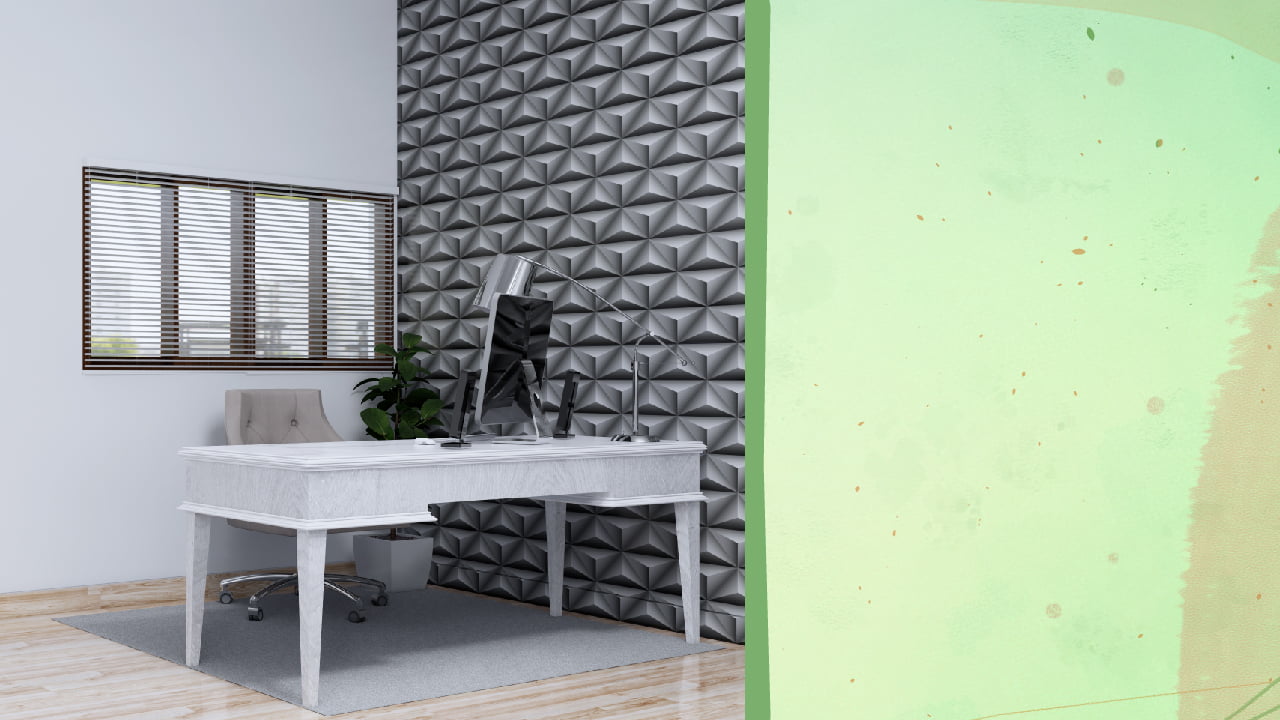
Paper-thin walls hamper not only the integrity of your apartment but also your privacy.
And in the worst-case scenario - you may suffer from sleepless nights, thanks to the budding musician, a restless child, or a noisy dog next door! Hence, soundproofing your room, ceiling, floor, or the entire property/apartment becomes essential.
So, today, I’ll discuss how to soundproof your apartment, listing a few things you should keep in mind and busting some myths thereof.
Apartment Wall Soundproofing 101
What Is Soundproofing, And Why Do You Need It?
Soundproofing involves blocking sound and noise and preventing sound transmission from one room to another. Since a thin wall cannot block sound efficiently, a professional may add mass and density to the existing wall to enhance sound absorption.
For instance, to soundproof an existing window, you may need soundproof window inserts or a thick curtain. Similarly, to soundproof the front door, sometimes an acoustic door seal kit may do the trick, or you may require an acoustic door.
Rest assured that depending on your unique soundproofing requirements and location, you will get a wide range of soundproofing methods and materials to choose from. Given below is a noise map of the United States (with yellow depicting the loudest noise) to help you choose a suitable soundproofing solution.
Now, coming to why your apartment may need soundproofing, the first and foremost reason is privacy. Thin apartment walls can easily transmit unwanted noises from one place to the other. Proper soundproofing allows you to maintain your and even the neighbors’ privacy, as it works both ways.
For this reason, soundproofing is a must in offices, movie theaters, and other commercial places. It allows people with different schedules to co-exist and work in harmony without getting disturbed by airborne noise. Additionally, a soundproof apartment building has the edge over other properties in terms of resale value.
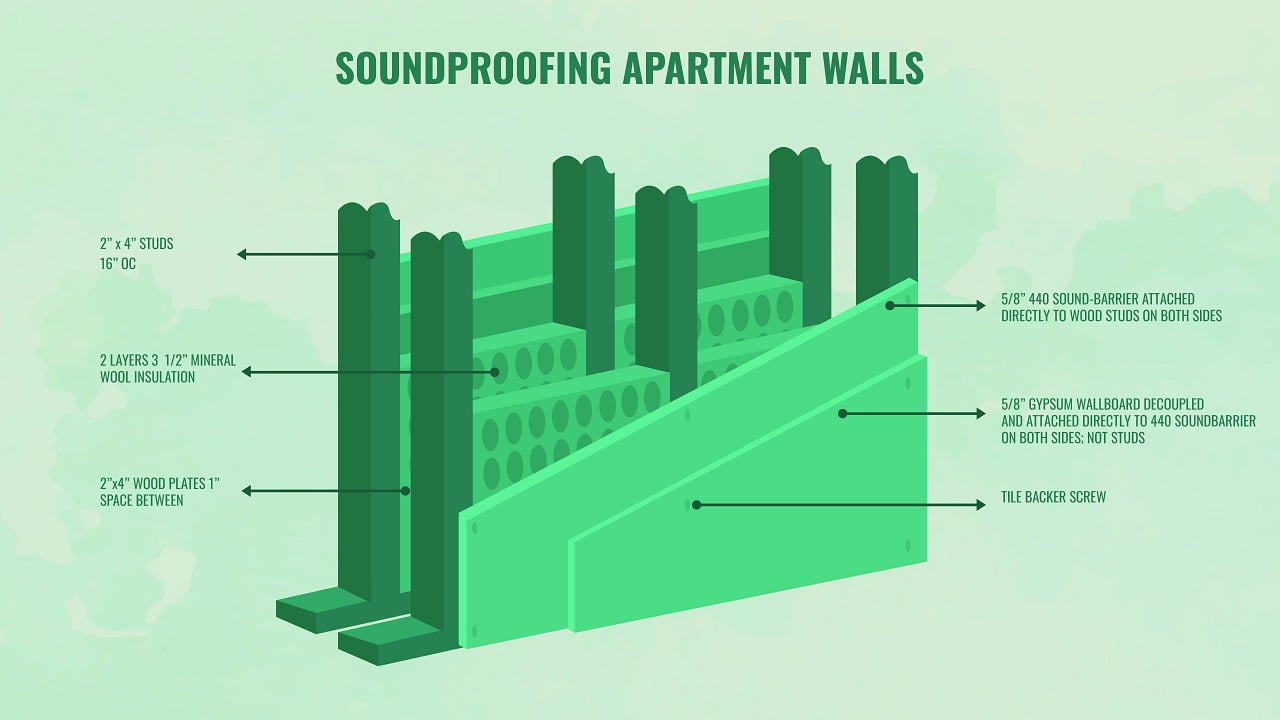
Examples Of Soundproofing Materials
- Window Inserts
- AudioSeal Mass Loaded Vinyl (MLV) Soundproofing Barrier
- Green Glue (Adhesive)
- Light-weight polyvinyl chloride-based soundproofing composites
- Barrier Wall Panels
- Clearsonic Isolation Enclosures
- PrivacyShield Absorptive Soundproofing Blankets

How To Soundproof Thin Apartment Walls
A. Without Construction
1. Glue Any Holes In The Wall
If you recently moved into a previously-used apartment, chances are that the apartment walls are full of holes for transferring cables and other purposes. These holes can aid noise transmission, especially if the shared walls are paper-thin.
Hence, sealing these holes is imperative to reduce noise in your apartment. And while there are plenty of sealants on the market, I recommend opting for green glue. The substance is somewhat similar to gypsum, so it not only acts like a sealant but also makes an excellent sound barrier.
Warning
Note that there are different types of green glue, and not all of them can be painted over. So, to avoid ruining the look of a thin wall, it is best to choose a product that can adhere to soundproofing paint.
2. Insulate Impact Noise With MLV
Mass-loaded vinyl is yet another material ideal for reducing background noise in apartments. Even vinyl mats, in general, can effectively cut down any airborne sound. Notably, vinyl is not just suitable for sound insulation but also thermal insulation. It is not a good conductor of heat and cold, thereby keeping the indoor temperature in check.
Vinyl mats essentially work like thick acoustic panels that block unpleasant and unwanted noises of low frequencies. They also lower the resonant frequency of the wall, letting it vibrate at lower frequencies. This improves bass frequency attenuation.
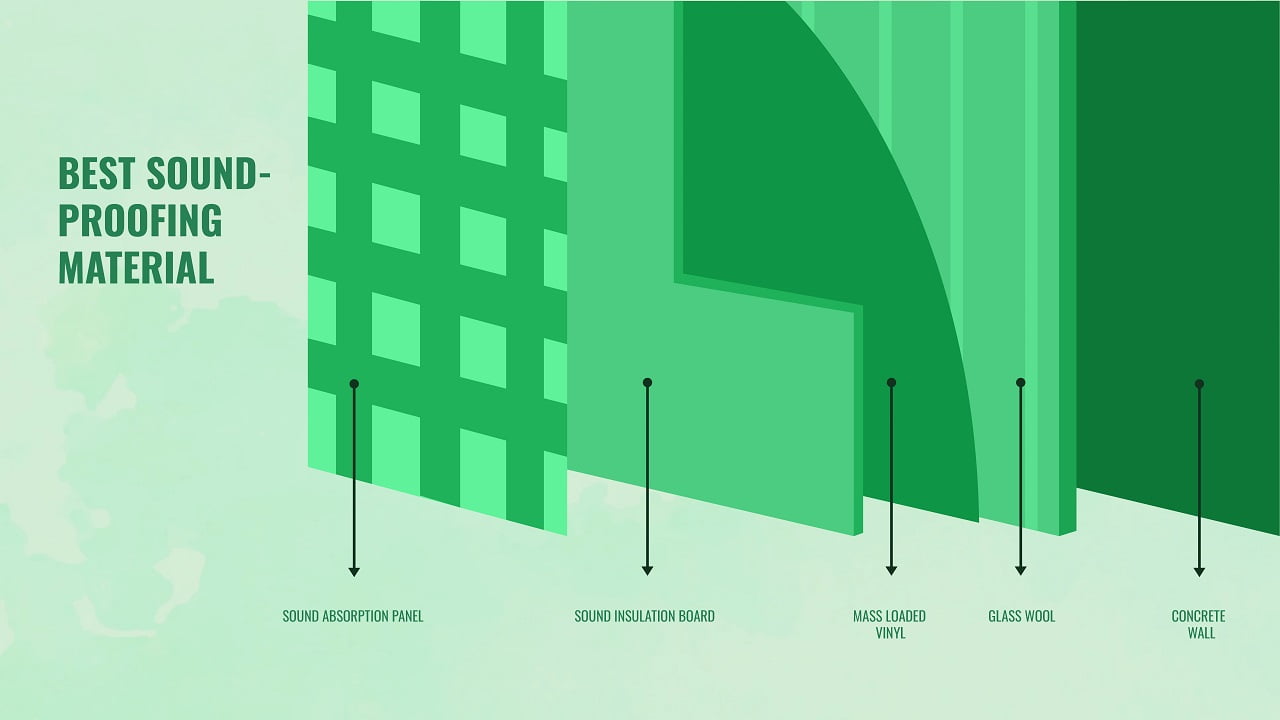
3. Use Furniture To Reduce Empty Spaces
A simple yet effective soundproofing method is to fill up an empty room with furniture. This reduces echo and other noises.
Consider adding a large bookcase to the shared wall. By storing more and more books, you can create a thicker sound barrier. Alternatively, you can place a wardrobe, hang wall décor, or shift other types of furniture to soundproof an existing wall.
Warning
This method will not offer drastic noise reduction. But it is an easy way out for those living in a rented apartment with limited permission to renovate the rooms.
4. Install Acoustic Panels
Acoustic wall tiles can assist as soundproofing solutions for thin walls. They are affordable and easy to install, so you don’t necessarily need to pay for the services of a professional. However, they don’t have enough mass to block sound entirely, but instead reduce the ambient sound in a space. They should be used in combination with other soundproofing treatments.
Coming to the construction of acoustic wall tiles, most of them are made of polyester, making them oil-resistant, lightweight, and odorless. And thanks to the sticky side of the panels, you do not need many materials to install them. Just peel them off, stick them next to one another, and your soundproof wall is ready!
5. Use Acoustic Foam
Acoustic foam panels are yet another excellent soundproofing solution, especially for studios, since they block at least 70% of noise from external sources. However, I recommend using acoustic foam panels in conjunction with any of the aforementioned soundproofing methods.
Tip
Since acoustic foam panels effectively reduce airborne noise, it is best to use them with any material that blocks impact sound. While purchasing multiple soundproofing materials may get expensive, I think it is a valuable investment to effectively soundproof walls.
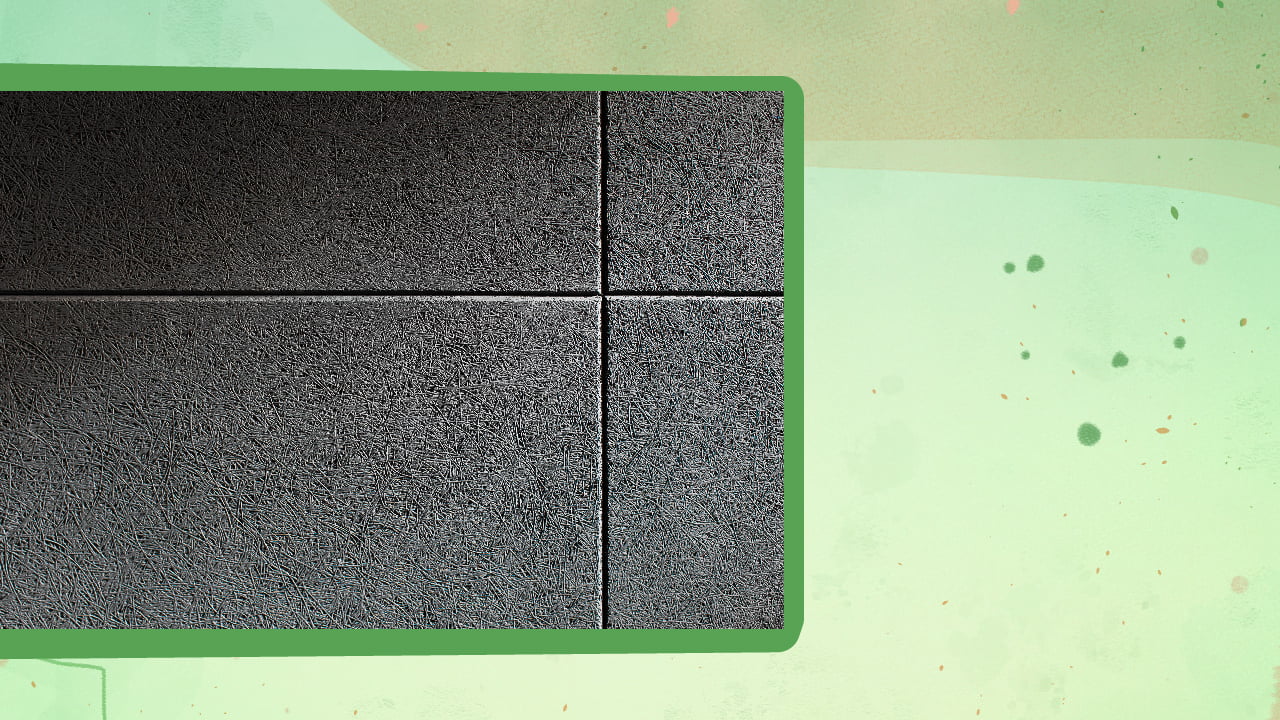
6. Invest In A White Noise Machine
If you need an instant solution to stop noise from passing through your thin walls, I recommend purchasing a white noise machine.
White noise machines drown out background noise by constantly producing broad-band noise signals; this is called Sound Masking. As such, a non-distractive form of noise will replace other noises, allowing you to work without distractions and sleep without disturbances.
Tip
I suggest using a white noise machine along with other noise-reducing materials, like soundproof padding or soundproofing blankets. You can further invest in a sound masking system to reduce sounds of different frequencies.
7. Use Soundproofing Paint
Depending on the amount of noise control you need, you can try painting thin walls with soundproofing paint. If there is not much noise, using soundproofing paint can help eliminate half the noise entering your apartment.
But, unfortunately, if there is a lot of external noise, the paint may not help even a bit. Hence, given below is a chart explaining the noise levels of different types of sounds…
Noise Levels Chart
Soundproofing paint boasts a thick consistency, so I recommend adding extra layers after the first coat of paint. Doing so will help lower noise levels, as the paint keeps the room insulated against low frequencies.
If you recently moved to a new apartment, repainting the room with soundproof paint and adding furniture is your best bet for quick soundproofing.
8. Seal Doors And Windows
Use weatherstripping to seal gaps around windows and below the door sweep to reduce the noise level in your apartment. Since weatherstripping tape consists of vinyl, felt, foam, rubber, and silicone, it is ideal for blocking unwanted sound. Not to forget, installing the material is easy enough to do it yourself, as all you need is a putty knife for the process.
Another method for soundproofing your doors and windows is caulking. But ensure that you are careful while working with a caulking gun, as the slightest mistakes can cause major defects. Besides impact noises, cold air and heat can also enter through the gaps around windows and doors. Hence, sealing such gaps can result in efficient temperature control.
Warning: If you live in a rented apartment, always check with your landlord if caulking around the windows is acceptable.
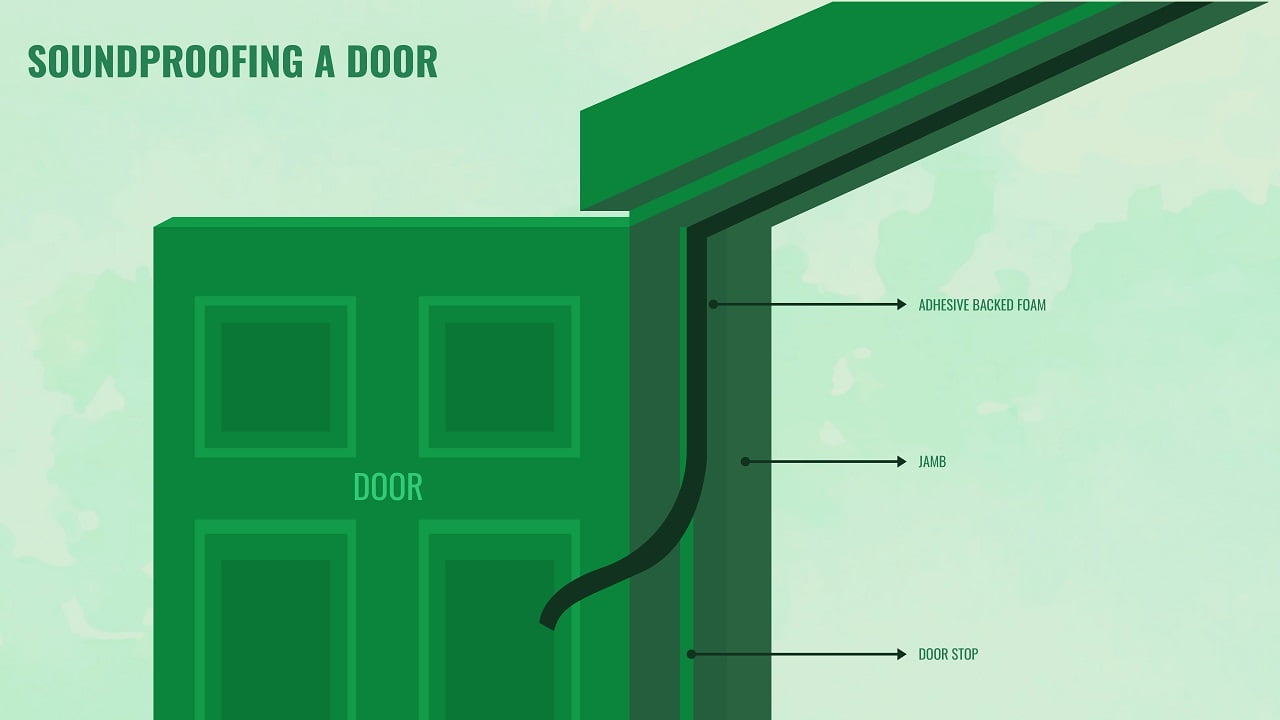
9. Install Soundproof Curtains
Another budget-friendly way of soundproofing thin apartment walls is by installing soundproof curtains. Some of these curtains may double up as blackout curtains, preventing harsh sun rays from entering your room and thereby allowing you to get more sleep!
Much to every homeowner’s delight, most soundproof curtains are available in various sizes, fitting most standard window sizes. I highly recommend installing them in your bedroom for a more quiet and relaxed environment.
10. Block Weak Points With A Soundproofing Blanket
If you’re lucky enough not to have thin walls, know that noise may transfer through weak points in a wall. One of the common culprits of weak spots in walls is the plumbing system which may be relatively noisy in that area.
Using blankets in such weak points helps dampen the sound by up to 50%. You can use nails or mounting putty to fix the blanket on the wall.
11. Add Extra Layers Of Drywall To Paper-Thin Walls
Thin walls are excellent conductors of sound, and hence, soundproofing involves adding mass and density to the affected area. One way of doing so is by adding multiple layers of soundproof drywall to the apartment walls. The added thickness will work wonders in blocking sound coming from your surroundings.
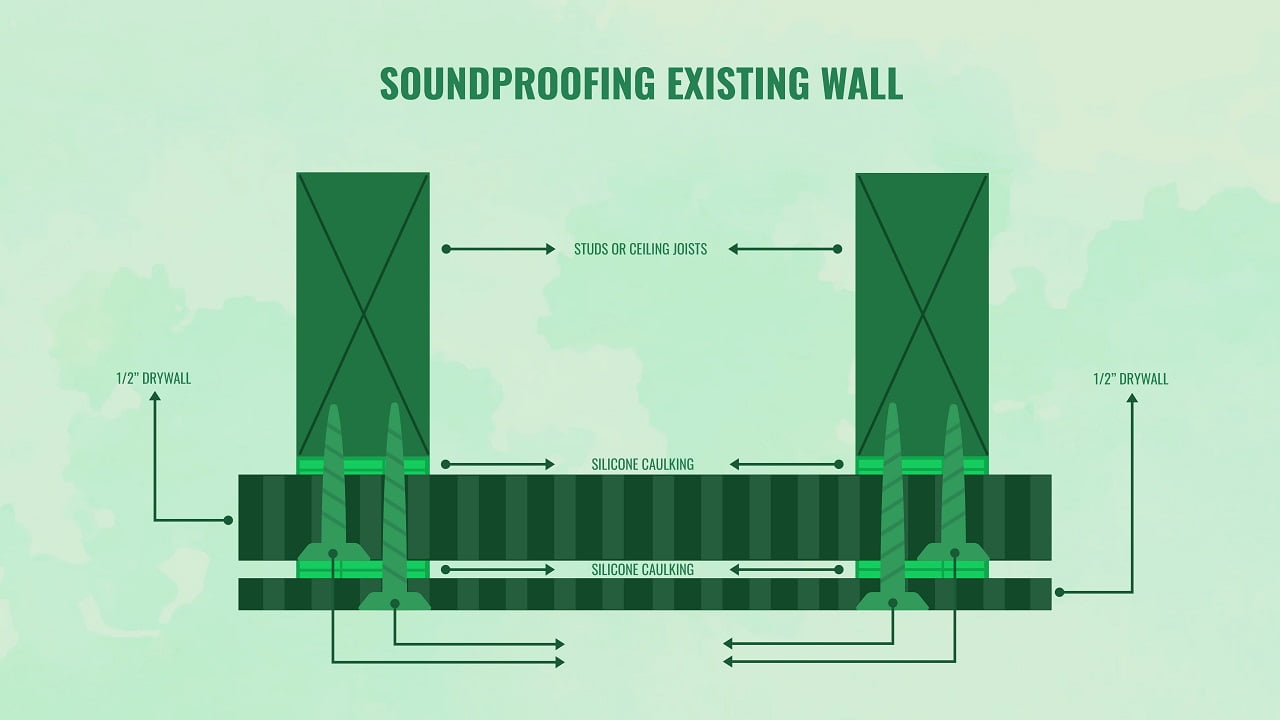
B. With Construction Work
With large apartments getting split into smaller, rentable units, the shared walls end up becoming thinner and cheaper. Hence, you will have to add more mass and insulation to make soundproof walls for your apartment.
Given below are the things you will need and the method for constructing a soundproof wall from scratch.
Things Required
Note that the method provided below fills a space of 5x7 square feet. Accordingly, the measurements and quantities of the materials are as follows…
- Basic building supplies, like masking tape, drill, ruler, rock knife, etc.
- Two tubes of green glue noise-proofing compound
- Full-sized caulk gun for green glue
- Framing supplies (for outside the “wall” and 1-inch struts for every 16 inches)
- R-13 insulation
- 3-inch drywall screws
- Two layers of drywall of the sound transmission class (STC) rating you require
- One tube of green glue sealant
- Safety equipment, like gloves, face masks, glasses, etc.
Steps To Construct A Soundproof Wall In Your Apartment
Step 1
Start by building a frame for the wall and placing the studs 16 inches apart for standard insulation. For effective decoupling, I recommend maintaining a 2-inch gap between the wall and the doors. Also, try using a stud along the edges of the drywall for better adherence and an overall neat look.
Step 2
Use a few layers of tape to protect the floor and attach the frame to the doorway. You can use screws to easily install the doorframe. Depending on the floor material, you may require spacers to fix the frame along the floor.
Step 3
Next, you must add insulation to the wall but make sure you’re wearing all of your protective gear. Fiberglass insulation should not come in contact with your skin and eyes at any cost.
Step 4
Now, cut the two layers of drywall according to the size of your wall. I recommend keeping the seams staggered for easy construction and effective sound isolation.
For cutting, you can use a rock knife and break the seam by laying the drywall on a flat surface. Alternatively, you can use a power tool or saw for a neater cut.
Additionally, you can choose to cut the drywall big enough for a tight fit or leave a gap of around ¼ inches to fill up with soundproof caulk. However, ensure you measure the doorway properly before cutting the drywall to avoid any blunders in the following steps.
Step 5
Start by attaching the first layer of drywall, and use drywall screws every 16 inches. Finish it off by filling the seams with green glue. This step may not be necessary since it’s the first layer, but it does make the constructed wall sturdier and more soundproof.
Now, let everything dry for 24 hours.
Step 6
Take the second layer of drywall and lay it flat on the ground. Squeeze out two tubes of green glue all over the drywall, ensuring that every corner is covered.
Now, pick up the drywall and attach it to the previous layer before the glue dries out. Make sure you are quick and careful while performing this step. Use screws every 16 inches around the seam to keep the two layers affixed.
Step 7
Next, caulk the seams of the second layer of drywall; you could even use tape and mud for the same. Then add some texture if you’d like, and finally, paint the wall with your favorite color.
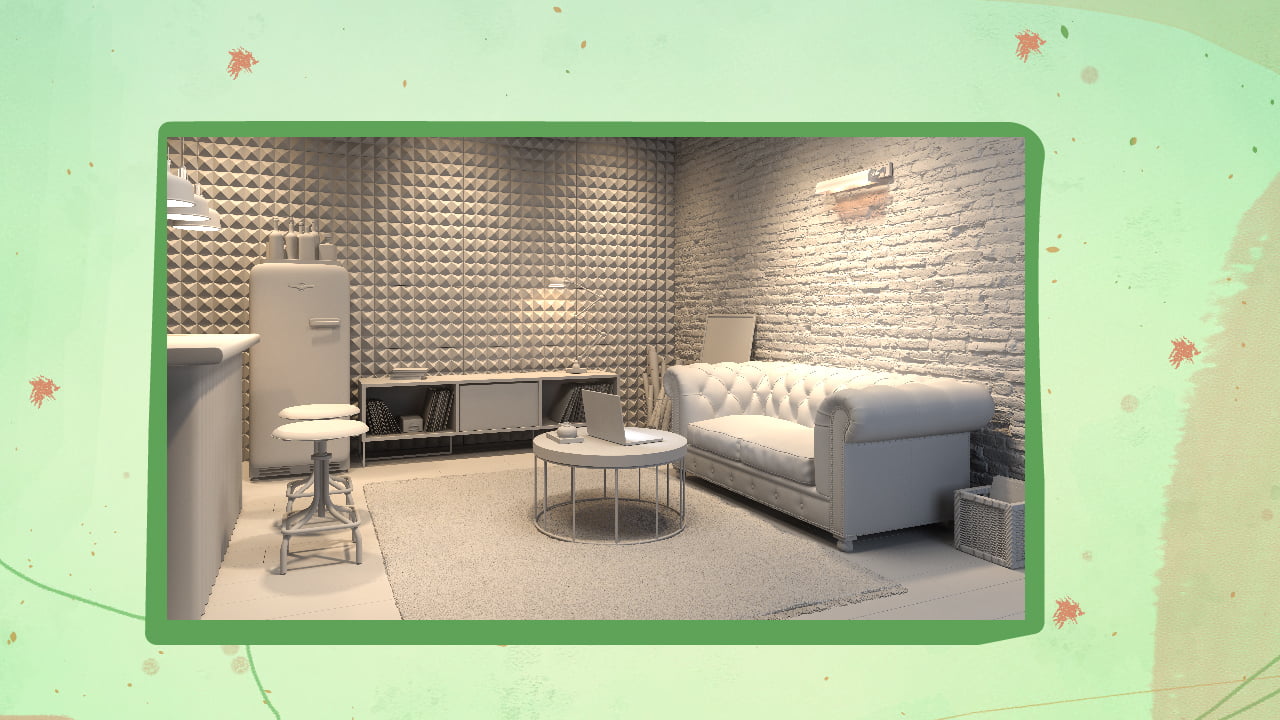
Apartment Wall Soundproofing Conclusion
Soundproofing your apartment is more than just using heavy curtains and thick blankets. You’ll require a professional or an experienced DIYer for properly soundproofing an area with soundproofing materials. And the fact that these soundproofing materials do not cost a lot of money is the cherry on the cake!
However, before I sign off, I’d like to bust some common myths about soundproofing. For instance, many believe that echo can be resolved with soundproofing, whereas, in reality, you’ll have to work on sound absorption to reduce sound bouncing.
Another myth is using soft furnishing and textile to block sound. While doing so can work in combination with other soundproofing methods, adding pillows and rugs alone will not do anything unless you address structural faults in your apartment. I suggest using acoustic panels and then topping them off with a sound-absorbing pillow headboard.
